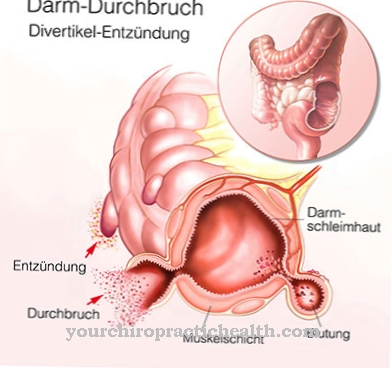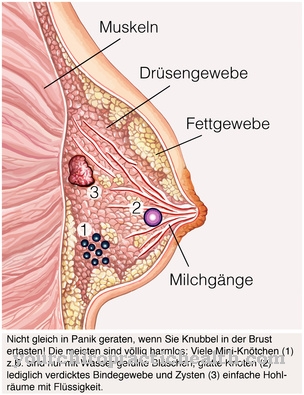The fetofetal transfusion syndrome is a form of insufficient blood flow that can be caused by anastomoses on the placenta in identical monochorionic twin pregnancies. One of the twins will receive more blood than the other. If left untreated, the syndrome usually leads to the death of both twins.
What is fetofetal transfusion syndrome?

© CLIPAREA.com - stock.adobe.com
The group of diseases of the transplacental transfusion syndromes summarizes various diseases of the fetus that can be traced back to placenta-related insufficient blood flow. One disease from this group is fetofetal transfusion syndrome, also known as Twin syndrome is known.
Like all other syndromes in this group of diseases, this syndrome is also based on insufficient blood flow with the resultant malnutrition. The fetofetal transfusion syndrome is relatively rare, but its manifestation is usually severe. Only twin fetuses are affected. The syndrome occurs in around twelve out of 100 pregnancies with identical twins.
A Canadian study indicates a prevalence of 48 people out of 142,715 newborns. In identical twins, the placenta is connected to the fetal bloodstream and its vessels. Therefore, an imbalance in blood exchange can develop between the unborn children, which causes the individual symptoms of the fetofetal transfusion syndrome.
causes
Fetal-fetal transfusion syndrome only relates to identical twin pregnancies, during which the unborn children share the same placenta. These pregnancies are also known as twin monochorionic pregnancies. In a large number of cases, blood vessel anastomoses form in the placenta during these pregnancies.
These connections between two arteries, two veins or arteries and veins create a placenta with communicating blood systems. The transfusion of blood takes place alternately through the anastomoses of the placenta. Most of the time, this type of blood exchange does not lead to complications, since the exchange between the fetuses is usually balanced.
However, if the blood exchange is unbalanced, one of the twin fetuses will lose blood to its sibling. When he loses more blood than he receives, an imbalance occurs in the bloodstream. In the situation described, a twin is the donor twin. The other is the recipient twin.
Symptoms, ailments & signs
With TTTS, the symptoms usually show up on ultrasound. Nonspecific complaints such as polyhydramnios appear as the syndrome progresses. There is a large disproportionate amount of amniotic fluid between the two twins. Often the urinary bladder of the donor twin cannot be visualized sonographically. The Doppler ultrasound shows absent or negative end-diastolic blood flow.
During the course, a decompensation of the heart can also be noticeable. The recipient twin is much larger than the donor and produces more amniotic fluid, so that a polyhydramnios develops. This symptom is often associated with overstretching of the uterus, which can result in premature labor or prematurely burst the amniotic sac. Because of the increased blood volume, the recipient twin often develops heart failure or generalized edema.
The donor twin is significantly smaller than the recipient due to malnutrition. The amniotic fluid decreases in its fruit cavity. After the birth, the donor suffers from anemia. Both the donor and the recipient can die with untreated TTTS. If one of the two fetuses dies, about a third of the time the second will bleed to death because of the anastomoses.
diagnosis
The first step in diagnosing fetofetal transfusion syndrome is to prove that you have a monochorionic twin pregnancy. Ideally, the chorale is checked between the ninth and twelfth week of pregnancy. Monochorionic twin pregnancies are closely checked sonographically about every third week.
In a differential diagnosis, the doctor must rule out placental insufficiency when making the diagnosis. In the case of an insufficiency, the larger fetus would not have a strong increase in the amniotic fluid. If left untreated, the fetofetal transfusion syndrome leads to premature birth and almost 100 percent death of the children. If the danger is identified and dealt with early enough, the prognosis is slightly more favorable. Permanent impairments are a frequent consequence of survival-ensuring treatments.
When should you go to the doctor?
This syndrome must always be treated. If there is no treatment or if treatment is delayed, both children usually die of this disease. In most cases, the disease can be diagnosed as part of check-ups right before birth. For this reason, pregnant women should regularly participate in such examinations to avoid such complications.
If one fetus dies due to the syndrome, the other usually dies as well due to insufficient blood flow. If the syndrome is detected, immediate treatment is necessary. Diagnosis and treatment can be done by a gynecologist or in a hospital. Furthermore, a doctor must be consulted if the patient suffers from premature labor.
In that case, you should go to the hospital directly. The emergency doctor must be called in an emergency. The success of the treatment depends heavily on the severity and time of diagnosis, so that a general prediction cannot be made. With an early diagnosis, no special compilations usually occur.
Doctors & therapists in your area
Treatment & Therapy
For the fetofetal transfusion syndrome there are still no treatment methods that guarantee the survival of the children with certainty. If the symptoms are minor, it is often necessary to wait. In the event of deterioration, an amniotic fluid discharge puncture is usually used first. The recipient's amniotic sac is punctured. The resulting drainage results in relief.
The amniotic sac does not burst and there is no premature labor. This symptomatic treatment only corrects part of the consequences, since polyhydramnios can develop again after the puncture. Another treatment option is laser ablation. The vascular anastomoses are severed by laser and are the treatment of choice for pronounced fetofeltal transfusion syndromes.
The ablation is preceded by a reflection of the amniotic sac, which makes the vascular connections traceable and precisely machinable with the laser. The vessels close and there are two fully separate circuits. This causal treatment removes the cause of the symptoms. Depending on the formation of the placenta, complications can arise with this treatment.
For example, it is conceivable that one of the two twins does not have enough placenta available after the transection. In this case, the twin dies. However, the second twin usually survives and remains unaffected by the death of the other due to the separate cycles. The fetuscopy can also lead to other complications such as premature rupture of the bladder or bleeding.
Outlook & forecast
The prognosis of the fetofetal transfusion syndrome is difficult to assess. However, it is unfavorable without the use of an experienced team of doctors. According to the current medical status, the disease cannot be adequately treated by doctors due to the lack of possibilities. To date, the syndrome can take a fatal course.
First of all, the development of identical twins in the womb is monitored and observed by the doctors. If there are no serious complications, there is no further intervention in the growth process. In a large number of cases, the prognosis is good. They give birth without any further abnormalities or peculiarities.
However, disorders such as sudden bleeding or cracking of the bladder are very common during pregnancy. In these cases, doctors need to intervene immediately. Depending on the progress of the pregnancy, a premature birth is initiated. The aim is to ensure the survival of the fetuses.
In the fetofetal transfusion syndrome, despite all efforts, one twin often dies. The death of both twins is also possible. If the circulation cannot be stabilized and the growing organism cannot be adequately supplied with blood, the prospect of a good prognosis decreases.
The chances of recovery increase if the expectant mother can be looked after by a well-trained birth center.
prevention
The fetofetal transfusion syndrome cannot be prevented. However, treatment in an experienced center can prevent fetal death.
Aftercare
In the case of transfusion syndrome, there are usually no special or direct measures and options for follow-up care available to those affected. In most cases, this syndrome unfortunately leads to the death of both children, so that no further follow-up care can be carried out to keep the children alive.
The follow-up care itself is mostly based on the psychological state of the parents and is intended to prevent psychological upsets or depression. As a rule, the affected parents with transfusion syndrome are dependent on the help and support of friends and family in order to prevent such psychological upsets. However, a visit to a professional psychologist can also be very useful.
Contact with other affected parents of the transfusion syndrome also often proves to be useful. If the two children do not die due to the transfusion syndrome, they usually need intensive care. However, it is not uncommon for only one of the two children to survive with such care. As a rule, the mother's health is not negatively affected by the transfusion syndrome, so that her life expectancy is not reduced.
You can do that yourself
To protect their own lives and that of their offspring, expectant mothers should take part in all check-ups and preventive examinations offered during pregnancy. In these examinations diseases are recognized and can be treated.
In fetofetal transfusion syndrome, the natural healing powers do not relieve symptoms. In the case of a twin pregnancy, it is rather the death of a fetus. Therefore, the self-help measures for this disease are to participate in the examinations during an existing pregnancy.
If the mother-to-be notices sudden irregularities despite all the controls and clarifications, she should consult a doctor immediately. This also applies if there is a vague feeling that something might be wrong with the unborn child. The pregnant woman should trust her perception and intuition and not allow herself to be irritated by other people or influences. To protect the mother and the fetuses, it is advisable to consult a doctor again if you suspect it.
In addition, the pregnant woman helps herself and her unborn twins if she remains calm throughout the treatment period and does not fall into anxious or panicky behavior. Unnecessary excitement is to be avoided, as this demands the entire blood circulation as well as the blood circulation and can bring it out of balance.


.jpg)










.jpg)

.jpg)
.jpg)











.jpg)